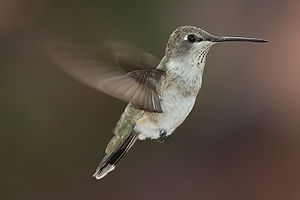![Blue Tit on bird feeder (Cyanistes caeruleus) [8]](http://farm3.static.flickr.com/2205/4218554065_d000d0ccff_m.jpg) Image by gynti_46 via Flickr
Image by gynti_46 via Flickr
Bird Watching Guide - Audubon Bird Feeders
Bird watching is an enjoyable hobby for many of us. We love the antics of the different birds as they try to get the best and largest amount of food. The bright colors and different species that come to our gardens are also a source of interest. One of the best ways to attract birds to your garden is with a feeder. As there are different aspects to the feeders, you might want to check out Audubon bird feeders just to get an idea of what you can buy.
There are different bird feeders that will suit the eating habits of your garden visitors. Ground feeders are best for birds like Doves, Goldfinches, Cardinals, Juncos, Towhees and Sparrows. These Audubon bird feeders need to kept in open areas, at least 10 feet away from any trees and shrubs. This way the birds will have a good chance of escaping from any incoming danger. The feeder is designed in a way that keeps the seeds fresh by separating the bird droppings from the seeds. Sometimes the ground feeders will have covers over them.
Sunflower seed tube feeders are good as they come with metal ports around the seed dispensers. These metal ports will stop hungry squirrels and house sparrows from raiding your bird feeders. It’s best to position this type of feeder about 5 feet off of the ground. To see more bird varieties coming for some food, you may want to hang your feeder near the windows. Audubon bird feeders like these attract Chickadees,
Nuthatches, Siskins, House Finches, Goldfinches, Titmice and Purple Finches as well
Another type of bird feeder that you should look into is the Suet feeder. Titmice, Chickadees, Nuthatches and Woodpeckers love to eat suet. Wrens and other birds will also sometimes eat the suet cake. You can feed suet by placing it in a mesh onion bag, or your other option is to buy Audubon bird feeders that are specially designed for feeding suet cakes to the different birds.
You can hang your suet feeder from trees or on a wire that’s stretched out between trees. You can also place it near other feeder poles and watch different birds eating both the seeds and the suet cakes. Since the suet can turn rancid you should avoid giving this feed when the outside temperatures rise into the 80 degree range.
Hopper feeders will let larger birds like Jays, Grackles, Red-Winged Blackbirds and Cardinals enjoy the mixed bird seed. You will find that these types of Audubon bird feeders have the smaller bird types coming to eat as well. The feed is released as the birds sit on the feeder trigger.
With so many birds around you should think carefully what type of birds that you want coming to your garden and buy your feeder accordingly. The Audubon bird feeders will allow you a greater choice in feeders and will also give you the opportunity to see lots of interesting birds in the relative quiet of your home.














![Reblog this post [with Zemanta]](http://img.zemanta.com/reblog_e.png?x-id=95114373-8700-4966-9bd6-4bfbe3512496)

![Reblog this post [with Zemanta]](http://img.zemanta.com/reblog_e.png?x-id=bfd7ed9f-a692-416d-8446-0fa40bd23500)

![Reblog this post [with Zemanta]](http://img.zemanta.com/reblog_e.png?x-id=290b3864-19a6-409b-85b0-137470a1d86c)